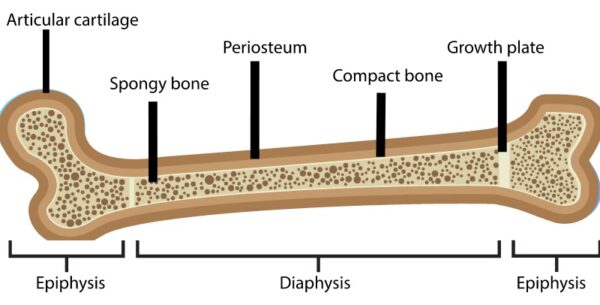Height has such a prominent role in our life and tall people usually enjoy certain privileges that their shorter counterparts can only envy. With the media idealizing the jobs of famous athletes or supermodels, even more people dream of having an ideal height. This leads to some businesses taking advantage of people’s vulnerability and introducing height boosting products or tips on how to grow taller overnight. But is this really possible? Can people increase their height in that little time simply by following those tips? If finding ways to grow taller fast is still at the back of your mind, this is the right place for you.
The process of human height growth
Before going into detail about how to increase height, let’s take a look at the growth process of people first. By comprehending what factors are responsible for height and how humans grow, we can better understand what we should do to grow taller.

When it comes to height increase, it is the growth plates at the ends of our long bones that are responsible for the shape and size of the bone. Each of our long bones has two growth plates at each end, and as children and teenagers grow older, these plates develop until they reach maturity and stop lengthening. Once the growth plates start to close (usually after a person has gone through puberty), they cannot grow taller naturally anymore. This commonly happens when girls reach 13-15 years of age. For boys, their growth plates will fuse quite later, at 15-17 years of age. This means that you will most probably reach your final adult height at this stage.

However, there are some rare cases in which the growth plates of adults do not fuse. This could be due to several health conditions such as gigantism. But for most people, their growth plates will have closed completely by the age of 20, after which nothing can make them grow taller naturally.
What are the factors responsible for your height?
Genetics plays a major role in human height growth. People whose parents have a modest height are likely to end up having the same height as their parents’. This applies to people with tall parents as well. Despite this, it is not completely impossible for children to grow up taller or shorter than their parents. Scientists have spent years doing research on this topic to find out that genetics is not the only factor responsible for your height. In fact, whether you can reach your maximum height potential or even surpass it relies heavily on different environmental factors such as nutrition, exercise, sleep, and living environment. By leveraging these factors, a person can grow taller fast and reach their maximal genetically predetermined height.

Now that you know what factors influence your height growth, let’s get back to the question of whether there is any way that takes advantage of these factors to grow taller overnight. The answer is an obvious NO if you are already an adult. But what about those still in their growing years? It should be noted that height gain is a gradual and continuous process. You cannot wish to reach the height of an NBA player after a good night’s sleep. In order to maximize your height, you need to put in a lot of effort to take care of yourself and your lifestyle. Here are some tips for your consideration:
- Include plenty of nutritious foods in your daily diet, especially those that are rich in calcium and protein. Protein fuels body growth while calcium builds strong bones. Foods rich in these two nutrients boost height growth for children and teenagers effectively. Although they would not necessarily make adults grow taller, foods with calcium prevent bone degradation and sustain your bone strength. In addition, protein can help maintain your proper posture and keep your muscles strong.
- Maintain proper posture. Did you know that how you feel about your height is greatly affected by your posture? A tall person with poor posture will seem shorter as they are constantly hunched over. On the contrary, an average-sized person with good posture can look taller than their real height. Try to stand with your back straight against the wall and pull your stomach in. Keep your shoulders back and your head straight while letting your arms hang at your sides. When you are sitting at work, remember not to slouch and keep your back straight. Not only does it maintain good posture but it also reduces back pain. More importantly, proper posture will also facilitate optimal height growth and body development for children and teenagers. For adults, better posture increases your confidence and makes it seem that you are taller.
- Exercise regularly. When it comes to a person’s height, exercise is extremely important. Exercise ensures children and teenagers stay fit and healthy, thereby optimizing their growth process, especially during puberty. Exercise also strengthens bones and muscles for adults, which enables them to maintain proper posture more easily and enhance their overall health.
- Get enough sleep every night. Your growth will not be stunted after a single night of no sleep, but constant lack of sleep will stunt your growth in the long run. This is due to the release of growth hormone during your sleep. It is when you are in deep sleep that this hormone is secreted at peak levels. Therefore, if you continue to get insufficient sleep, your growth hormone level is suppressed. Sleep deprivation also negatively affects other hormones, which is detrimental to your overall health. As a result, if you dream of having an ideal height that everyone has to admire, do not stay up late and get plenty of sleep throughout your growing years.
These tips are incredibly helpful for your height gain during your growing years. Although you cannot increase your height once your growth plates have closed completely, by following our tips, you can improve your posture, enhance your general health, and avoid potential height loss due to old age in the future.
